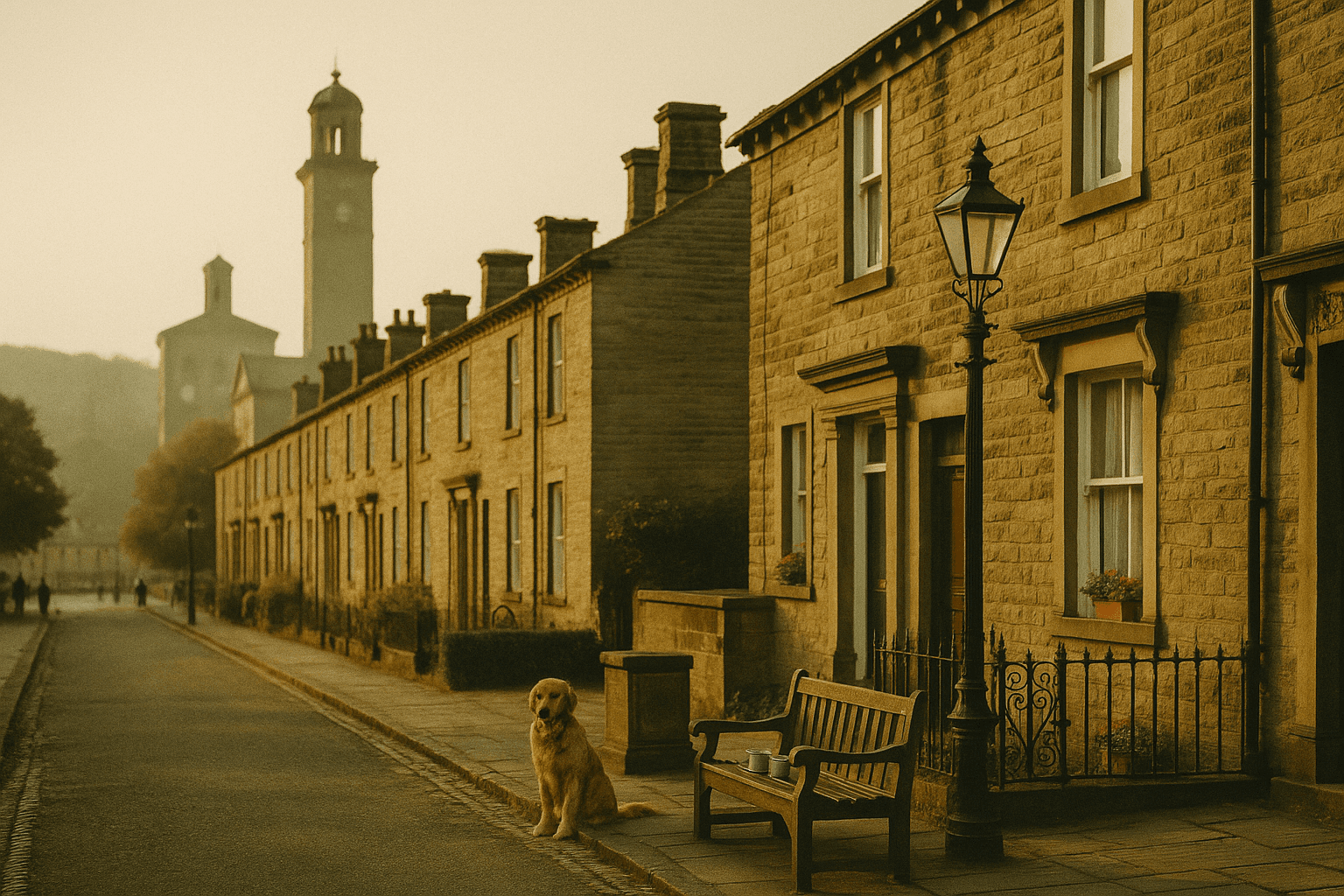Salts Mill opens
Sir Titus Salt builds a vast new alpaca-wool mill on the River Aire and Leeds–Liverpool Canal, away from polluted Bradford.
A model industrial village founded by Sir Titus Salt. Italianate stone streets, a colossal mill and a riverside park—together recognised by UNESCO for outstanding universal value.
This page is your starting point: use the topic grid below to jump into detailed guides on buildings, people, timelines and research.

Pick a topic to dive deeper. Everything here is being expanded over time, combining modern, visitor-friendly guides with serious research links.
How the village was planned, built and laid out – mills, streets and civic set pieces.
Landmark tower, portico and Salt family mausoleum.
Philanthropic housing and care on Victoria Road.
Terraces, status cues and the everyday fabric of the village.
Classrooms, ventilation and the investment in skills.
Criteria, boundaries and what inscription means in practice.
Local newsletters and research journals in one place.
Where to go next if you’re digging into Saltaire’s past.
How the First World War touched the village and its people.
Later industry, change and preservation in the 20th century.
Saltaire is a remarkably complete planned industrial village: a monumental mill set alongside dignified workers’ housing, civic buildings and recreation spaces, all conceived as one design.
It demonstrates 19th-century approaches to industry, welfare and town planning that influenced developments well beyond Yorkshire.
The original street plan, skyline and stone façades largely survive. Adaptive reuse of the Mill and conservation of Roberts Park protect vistas and the relationship between river, canal and village.
The essentials—from founding to inscription—so you can place what you see on the ground. For a deeper dive, see the dedicated timeline page.
Sir Titus Salt builds a vast new alpaca-wool mill on the River Aire and Leeds–Liverpool Canal, away from polluted Bradford.
Italianate stone housing, neat streets, schools, church, wash-houses and recreational facilities provided for workers.
Leadership passes to his sons and trustees; the village identity and amenities continue to shape daily life.
Wool trade fluctuates; the mill passes through different owners. The village’s fabric remains largely intact.
New uses for the Mill and village accelerate conservation, cultural activity and public access.
Saltaire is designated a World Heritage Site for its outstanding, intact example of a mid-19th-century industrial model village.
Galleries, bookshops and cafés in the Mill; Roberts Park restored; the village remains a thriving residential community.
See also: Salts Mill and Roberts Park.
A quick sketch of the physical setting. For a full building-by-building exploration, see the architecture guide.
Mill and housing draw on Italian Renaissance forms: round-arched windows, cornices, symmetry and a landmark chimney.
Gridded streets with consistent stone façades, crescents and civic buildings create coherence rare in industrial towns.
Church, schools, institute, wash-houses and recreation spaces reflect 19th-century philanthropy and reformist ideals.
Sited by the River Aire, the canal and the railway for power and transport, yet separate from Bradford’s smoke.
For photo ideas, try our Salts Mill photo spots and the towpath & park loops.
These are the names you’ll see most often. We’ll expand them into detailed biographies in the people & biographies section.
Industrialist and philanthropist who consolidated his mills at Saltaire and built housing and amenities for workers.
Later owner associated with village improvements; Roberts Park bears his name after a key donation.
Village built to unified plans by professional architects/engineers of the period, producing rare consistency across streets.
Saltaire is not a museum. Residents live in the historic houses—please be considerate when exploring and keep to public routes.
The village retains exceptional integrity: plan, building stock and skyline survive with limited alteration.
Adaptive reuse of Salts Mill preserves the industrial shell while supporting culture and retail.
Roberts Park restoration maintains vistas between park, river, canal and Mill.
Ongoing conservation management balances residential life with visitor interest.
We prioritise primary and authoritative references. If you spot an error, email hello@saltaireguide.uk.
It is an exceptionally intact model industrial village that shows how 19th-century ideas about industry, housing and welfare were built into one planned place.
The Mill opened in 1853, with the surrounding village built largely between 1853 and 1876.
Yes. It is a living community with residents, shops, cafés and cultural venues—please be considerate when visiting.
Start at Salts Mill for galleries and shops, then walk to Roberts Park and through the village streets. Local signage and exhibitions change seasonally.
Pair the history with a lap of the village: Salts Mill, Roberts Park and a towpath stretch. Our guides keep everything practical and current.
